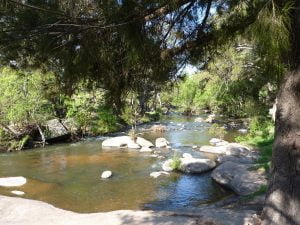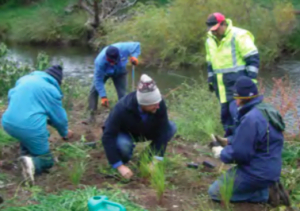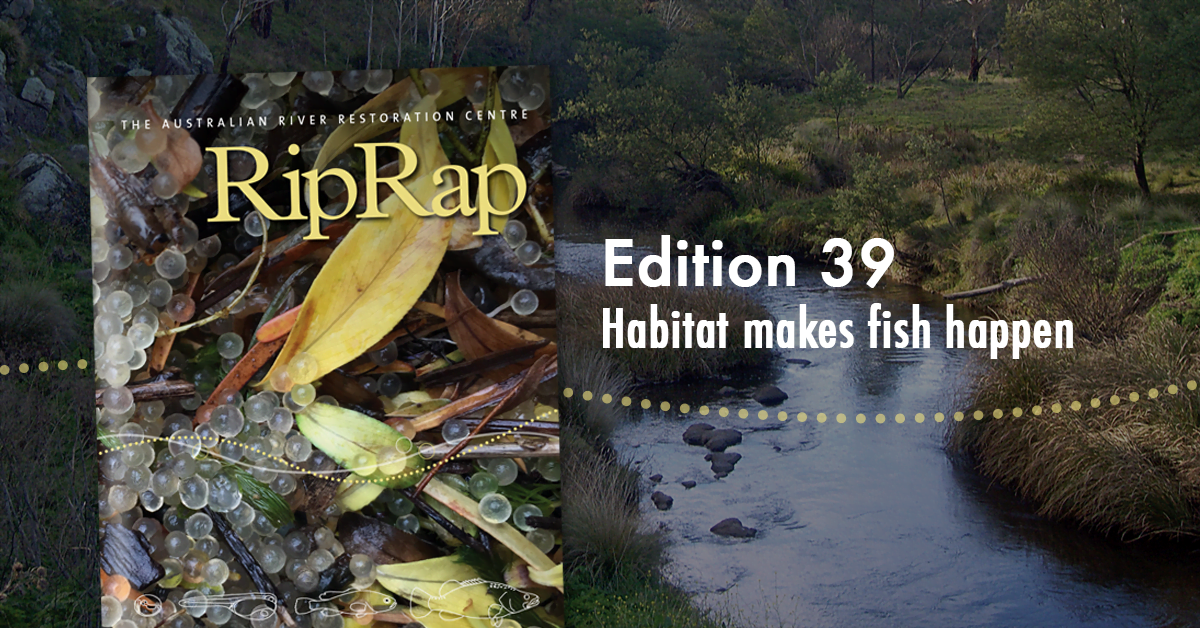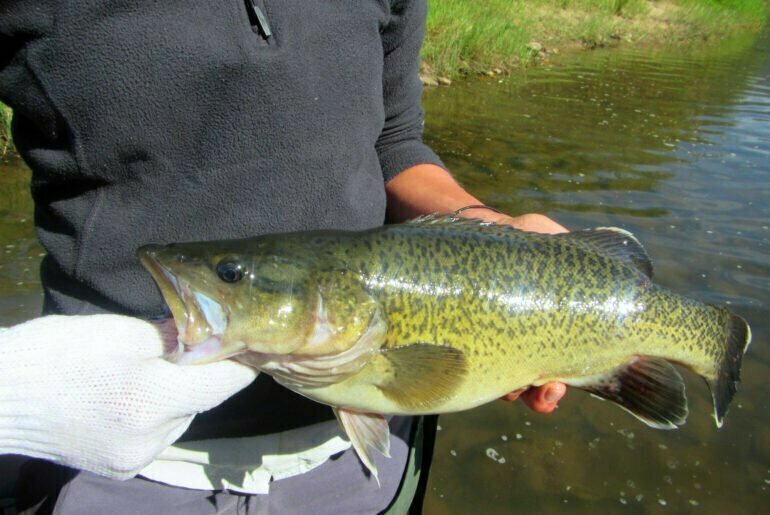Since the formation of the Central Tablelands Local Land Services, their natural resource management teams have continued to focus on improving aquatic habitat by delivering incentives and targeted projects across the region. Activities have included community education, re-snagging, and riparian restoration following willow removal. Focusing on riparian zones has multiple benefits; rehabilitating waterways and associated vegetation, and helping to protect populations and habitat of threatened species such as the Purple spotted gudgeon, Silver perch and the Booroolong frog.
The largest riparian initiative was the Fish River Project, a three-year investment funded through the Australian Government’s Biodiversity Fund completed in June 2015. The Fish River is a large freshwater sub-catchment located south-east of Bathurst, with tributaries running west from the Great Dividing Range down to the confluence with the Campbells River, which is the start of the Macquarie River system. This project focused on improving riparian condition, water quality and aquatic habitat, as well as increasing landscape connectivity across the catchment.
Revegetation to build landscape resilience and establish wildlife corridors
Private landholders within targeted areas of the Fish River catchment were offered financial incentives and technical support, to protect and enhance ecologically sensitive areas, and to control invasive species that threaten biodiversity. Revegetation activities were undertaken to build landscape resilience and establish wildlife corridors, linking high conservation value riparian lands to significant remnant areas and public reserves. A series of workshops detailing specific riparian management issues were also held to educate land managers and local groups.
During the first year of the project there was a focus on the removal and management of willows along 20.3 kilometres of stream, mainly on key reaches of the Fish River. Subsequent years focused on preparing and restoring the riparian zone through stock exclusion, installing alternate watering points (dams and troughs), fencing, weed and pest animal control and, finally, revegetating with native endemic species.

Project results
The project achieved outstanding results, with 30 landholders undertaking activities on their properties, and over 38.6 kilometres of aquatic habitat being improved. Another positive aspect was the momentum it gained throughout its duration, with many landholders joining in. Success stories spread through the catchment by word of mouth, especially from those involved in the initial stages of the project.
“The key achievement of the project from our perspective is how quickly the natives have started to generate naturally when not having to compete with noxious weeds. It was very exciting and reassuring that the action we had taken was beneficial. This is magnified by the rest of the landholders who have signed up to the Fish River Project – our efforts will improve the health of the Fish River and return it to having more native flora regenerating and providing habitat for native fauna.” – Rebecca Welsh, Fish River Project Participant
Community involvement
Overall the project was a great success although, inevitably, it was not without its challenges. In its early stages when willow management was a key focus, there were concerns raised by members of the public who preferred the willows were left in place. This issue was addressed by discussion on impacts of willows during field days and demonstrations of best practice restoration. We demonstrated the importance of minimal disturbance to the riverbank during willow removal with root balls left in place to reduce erosion and damage to the stream bank. An experienced rehabilitation specialist planted local riparian species within all zones of the riverbanks including the water’s edge, using a mix of native groundcovers, shrubs and trees, all chosen to mimic the natural riverbank vegetation community.
In some cases, getting ‘buy in’ from landholders on both sides of the river was not possible, however, the few that chose not to get involved were outnumbered by the many neighbours who worked together to connect sections of aquatic habitat along the Fish River – a fantastic result for the waterway!
Future projects
Protection of swampy meadow (valley fill) systems to maintain and improve water quality and base flows downstream was another focus of the project, but unfortunately, there was little interest from landholders. It seems they are not overly familiar with the terms ‘valley fills’, ‘chain of ponds’ and ‘swampy meadows’, and the importance of these systems. This has been identified as an area for further work through on-ground capacity building activities.
 Since the completion of the Fish River project, the Central Tablelands Local Land Services has continued to work to improve aquatic habitat, with their Ecosystem Enhancement and Improvement projects achieving over 64 kilometres of streambank enhancement or rehabilitation. They have also protected 200 hectares of native riparian vegetation with fencing. These projects involved incentives very similar to the Fish River project, but expressions of interest were opened to landholders across the whole of the Central Tablelands.
Since the completion of the Fish River project, the Central Tablelands Local Land Services has continued to work to improve aquatic habitat, with their Ecosystem Enhancement and Improvement projects achieving over 64 kilometres of streambank enhancement or rehabilitation. They have also protected 200 hectares of native riparian vegetation with fencing. These projects involved incentives very similar to the Fish River project, but expressions of interest were opened to landholders across the whole of the Central Tablelands.
A number of other projects are also being planned and undertaken to improve the region’s waterways. These include habitat mapping to identify areas with low instream habitat for fish, along with a Saving Our Species project in partnership with the NSW Office of Environment and Heritage to improve rocky crevice habitat along local creeks for the threatened Booroolong frog. They are also collaborating with others to re-snag a small section of the Abercrombie River to improve in-stream woody debris for fish habitat. More information about these projects can be found on the Central Tablelands Local Land Services website.
To read this and other great stories like it, you can purchase or download a copy of RipRap 39 magazine. A pdf version of this story is also available to download here.




